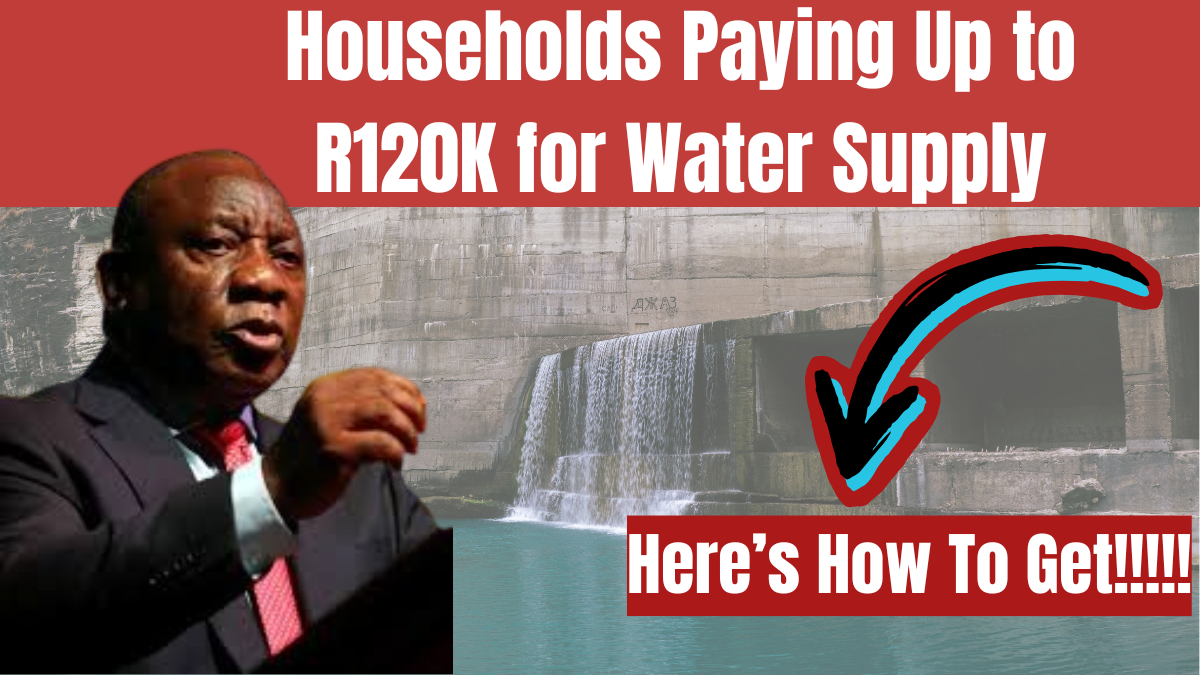South Africa’s escalating water crisis has left many households, particularly in Gauteng, struggling with unreliable supply. As a result, those who can afford it are spending between R15,000 and R120,000 on alternative water sources such as boreholes and storage tanks.
The crisis stems from mismanagement, ageing infrastructure, and increasing demand, leaving large portions of Johannesburg and surrounding areas vulnerable to water shortages.

How Severe Is Johannesburg’s Water Crisis?
Johannesburg faces worsening water shortages due to a combination of factors:
- Climate change and declining rainfall.
- Illegal water connections straining supply.
- Infrastructure backlogs delaying necessary upgrades.
Johannesburg Water estimates that it needs R27 billion to fix existing infrastructure and an additional R11 billion for future projects. However, funding constraints have slowed progress, forcing residents to seek costly alternatives.
Are Johannesburg Residents Facing a “Day Zero” Scenario?
Johannesburg Water’s Managing Director, Ntshavheni Mukwevho, has stated that while the city is not at immediate risk of a “Day Zero” scenario, it faces a serious supply-demand imbalance.
Authorities are implementing measures to reduce consumption, yet many communities continue to experience:
- Trickle water supply at night.
- Intermittent or no water supply for weeks.
- Infrastructure neglect worsening disruptions.
What Is the Government Doing to Fix Water Infrastructure?
To tackle the crisis, the Johannesburg City Council has approved a R32.5 billion investment plan aligned with the National Treasury’s Trading Services Reform initiative. This includes:
- Nearly R1 billion invested in new infrastructure such as reservoirs, towers, pump stations, and pipelines.
- First-phase completion by April next year, with additional work taking up to 18 months.
Despite these efforts, ageing pipes, leaks, and burst pipes continue to strain Johannesburg’s water system.
How Are Households Coping with the Water Crisis?
Due to ongoing supply disruptions, the demand for alternative water sources has skyrocketed. According to Sebasti Badenhorst, Sales & Marketing Executive at JoJo Tanks, there has been a surge in demand for water storage tanks across Gauteng.
- Accredited installers report long waiting periods due to high demand.
- Many homeowners are investing in boreholes and water tanks, despite the significant costs involved.
How Much Do Water Storage and Borehole Systems Cost?
According to Rand Water, the average South African household uses 237 litres of water per person daily, totaling around 7,000 litres per month.
| Water Solution | Estimated Cost |
|---|---|
| 1,000-litre tank system (with pump) | R14,880 |
| 10,000-litre storage tank | R31,250+ |
| Complete borehole system | R60,000 – R120,000 |
For many households, these costs are unaffordable, leaving them with limited options to secure clean water.
What Are the Government’s Long-Term Solutions?
In his State of the Nation Address (SONA), President Cyril Ramaphosa outlined major government efforts to tackle the crisis:
- The Infrastructure Fund has secured R23 billion for large-scale water projects.
- One key project is the uMkhomazi Water Project Phase 1 in KwaZulu-Natal, with a construction cost of R23.2 billion.
- This includes the construction of the Smithfield Dam, with a capacity of 251 million cubic meters, expected to provide water security for six million people.
Will These Investments Solve the Water Crisis?
Water expert and Unisa associate professor Richard Meissner warns that while large-scale infrastructure projects can improve water security, they often fail to benefit smaller municipalities and rural communities.
- Many local governments lack funding and management capacity to sustain long-term water solutions.
- Water loss remains a major issue, with nearly 50% of Johannesburg’s water supply lost to leaks and burst pipes.
Are Water Restrictions Enough to Prevent a Collapse?
Recently, Rand Water issued an urgent warning to Johannesburg and Tshwane residents, urging them to reduce consumption to avoid system failure.
- On February 12, Rand Water reported storage levels dropping rapidly due to excessive consumption.
- Despite operating at full capacity, demand continues to exceed supply, threatening the entire system.
FAQs
Why are South Africans spending so much on water?
Due to unreliable supply and infrastructure failures, many households are investing in boreholes and water storage tanks to secure their water needs.
How much does it cost to install a borehole in South Africa?
A complete borehole system costs between R60,000 and R120,000, depending on factors such as drilling depth and equipment.
Is Johannesburg running out of water?
Johannesburg faces a severe supply-demand imbalance, but officials say there is no immediate risk of Day Zero if consumption is reduced.
What is the government doing to fix the water crisis?
The government has approved R23 billion in water infrastructure projects, including the uMkhomazi Water Project and Smithfield Dam.
How much water does an average South African household use?
The average household uses around 7,000 litres per month, with 237 litres per person daily.
Are water restrictions helping Johannesburg’s crisis?
Authorities are enforcing restrictions, but leaks and ageing infrastructure cause nearly 50% of water loss, undermining efforts.
How long will it take to fix Johannesburg’s water infrastructure?
The first phase of Johannesburg Water’s new infrastructure plan is expected to be completed by April next year, with additional upgrades taking up to 18 months.
What can residents do to manage the water crisis?
Households are advised to reduce consumption, install storage tanks, and explore alternative water sources such as boreholes where possible.
Click here to know more.
Aanchal is a passionate writer with a keen interest in storytelling, content creation, and creative expression. She enjoys exploring diverse topics and crafting engaging narratives that captivate readers.
